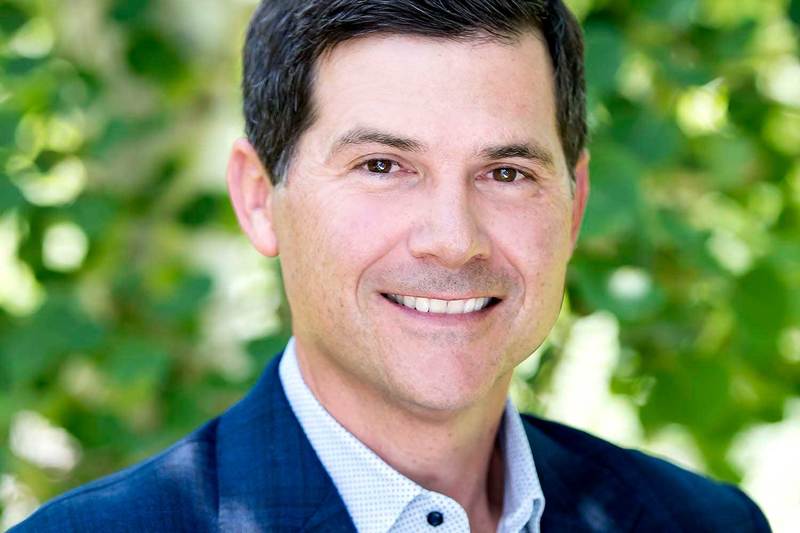News
How Vail Health is enhancing access to care

Since assuming the role as president and CEO of Vail Health in January 2019, I have stated that our top priorities are addressing the behavioral health crisis and enhancing access to higher-quality, more affordable health care for locals. In a way, these two things go hand-in-hand, as research has proven that a healthy mind and healthy body are not mutually exclusive.
As we analyzed our top priorities, we recognized the most immediate and important impact we could have on access to care was in the behavioral health space. Through a $60 million commitment by Vail Health, we were able to create the wholly-owned subsidiary Eagle Valley Behavioral Health. This team has been actively engaging with the community and has made strides to address access to resources. While progress has been made, the battle is not over, so in December, we doubled down and launched an ambitious $100 million, multi-year campaign to benefit local behavioral health.
To enhance access to higher-quality, more affordable health care for locals, we are pursuing both immediate and long-term solutions.
Immediately, we are creating relief by focusing on rates. Rates are the prices that hospitals and providers charge patients, self-insured employers and insurance companies. These can be broken into buckets, depending on the type of insurance a person is eligible for.
Large employers
For some of our larger employers who are self-insured, we are continuing to utilize direct contracts — which are contracts made directly between the large, self-insured employers and Vail Health to provide a lower cost, higher-quality health insurance option for its employees. These are health care plans that pass on reduced prices to local workers and their families with the hope of encouraging them to seek their care locally through Vail Health.
Individual exchange
Collaboration by Colorado hospitals with Gov. Jared Polis and our two local lawmakers at the state level, Sen. Kerry Donovan and Rep. Dylan Roberts, last year led to the passing of the reinsurance bill, in which Colorado hospitals are contributing $40 million to help lower the cost of insurance on the individual insurance market exchange. Through this effort, those shopping on the individual exchange are seeing a significant reduction in premiums in 2020, including rates on the Anthem Mountain Enhanced product that are lower than any offered on the individual exchange in 2019 in our region.
Small/midsize employers
Vail Health is partnering with the Vail Valley Partnership on a new entity called the Mountain Healthcare Coalition. This new collaborative model would allow employers of all sizes, self-insured entities, and individuals to unite for lower insurance premiums — like how direct contracts work with self-insured businesses. This involves a longer, more complex process, which requires us to act now, digging deep into data and keeping the pedal down to meet the deadlines for the 2021 calendar year.
Uninsured
Eagle County has a 13 percent uninsured rate. The state rate is 6.5 percent. This is one of the primary reasons that enhancing access to more affordable care is one of Vail Health’s top priorities. In the long term, as we achieve this goal, the uninsured rate in our county will decrease. To provide immediate relief for our uninsured locals, Vail Health has expanded our financial assistance program from 350 percent of the federal poverty level to 500 percent of the federal poverty level. Some Colorado hospitals are at only 250 percent. This increase allows a much wider range of locals to receive substantial financial assistance, up to 100 percent off, for their health care bills.
In addition, Vail Health supports MIRA, the Mobile Intercultural Resource Alliance bus, which is a mobile clinic that provides free health care and other social services to some of our communities with the greatest needs; provides almost $400,000 annually to support the Mountain Family Health Center; has partnered to install 78 public defibrillators (AEDs) with Starting Hearts; and we recently cut MRI costs in half, allowing locals to be smart consumers and shop for their services.
Another long-term issue we must address as a community is population health. If we can improve the overall health of people, then we can improve their quality of life while reducing the higher cost of more expensive care. This is a behavior shift. It means seeing your primary care doctor for your annual wellness exam; knowing when to use the urgent care instead of the emergency department; and catching issues in the early stages by getting a mammogram at 40 or colonoscopy at 45, for example.
Population health is where our new partnership with Colorado Mountain Medical, the valley’s top primary care and specialist provider, becomes vital. We must get upstream and ahead of chronic health conditions. If we do, it will not only result in improved health of our community but also a decrease in perhaps avoidable more-expensive care.
All of this is just the start. It is going to take many short-term meaningful steps and a long process to get us to where we need to be. As the community healthcare provider, we are committed to proactively addressing issues that impact the behavioral and physical health of our residents and helping improve the quality of life for the people who live, work and play here.
If you have questions, please join me on Feb. 6 for one of the annual State of Vail Health presentations at Donovan Pavilion in Vail from 12:30 to 2 p.m. or at the Brush Creek Pavilion in Eagle from 6 to 7:30 p.m. RSVP by emailing series@vailhealth.org or call 970-569-7755.
More News
-
New!
More

Screening Secrets: What Every Man Should Know About Prostate Cancer Screening
Prostate cancer is the most common type of non-skin related cancer in men, and it is the second leading cause of cancer-related deaths in men within the United States, behind lung cancer. Fortunately, if caught early, prostate cancer remains highly treatable and curable with minimally invasive procedures.
-
New!
More

Unplug to Recharge: Why a Digital Detox Is the Real Power Move for 2026
Our phones promise connection, convenience and control, yet most of us feel more scattered, stressed and sleepless than ever. The constant pings, scrolls and notifications have rewired our brains for distraction. The fix? Not abandoning technology altogether, but reclaiming balance.
-
New!
More

Beyond the Scale: Why Nutrition and Exercise Work Better Together
For decades, weight loss advice has been distilled into a simple equation: calories in, calories out. Eat less, maybe combine that with exercise, and the pounds will fall away. But according to experts at Vail Health, that equation overlooks a much bigger picture.





